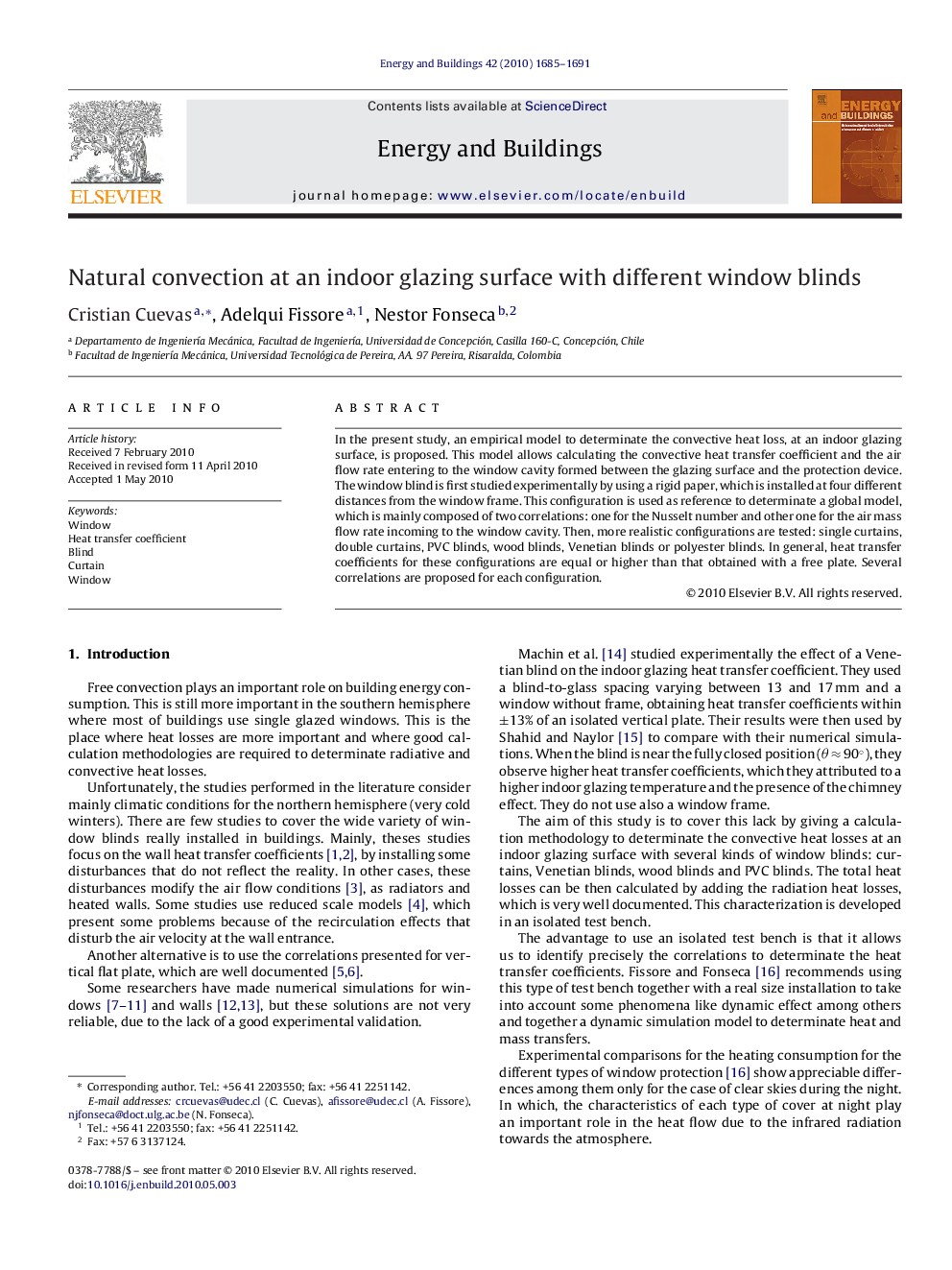| Article ID | Journal | Published Year | Pages | File Type |
|---|---|---|---|---|
| 264592 | Energy and Buildings | 2010 | 7 Pages |
In the present study, an empirical model to determinate the convective heat loss, at an indoor glazing surface, is proposed. This model allows calculating the convective heat transfer coefficient and the air flow rate entering to the window cavity formed between the glazing surface and the protection device. The window blind is first studied experimentally by using a rigid paper, which is installed at four different distances from the window frame. This configuration is used as reference to determinate a global model, which is mainly composed of two correlations: one for the Nusselt number and other one for the air mass flow rate incoming to the window cavity. Then, more realistic configurations are tested: single curtains, double curtains, PVC blinds, wood blinds, Venetian blinds or polyester blinds. In general, heat transfer coefficients for these configurations are equal or higher than that obtained with a free plate. Several correlations are proposed for each configuration.
